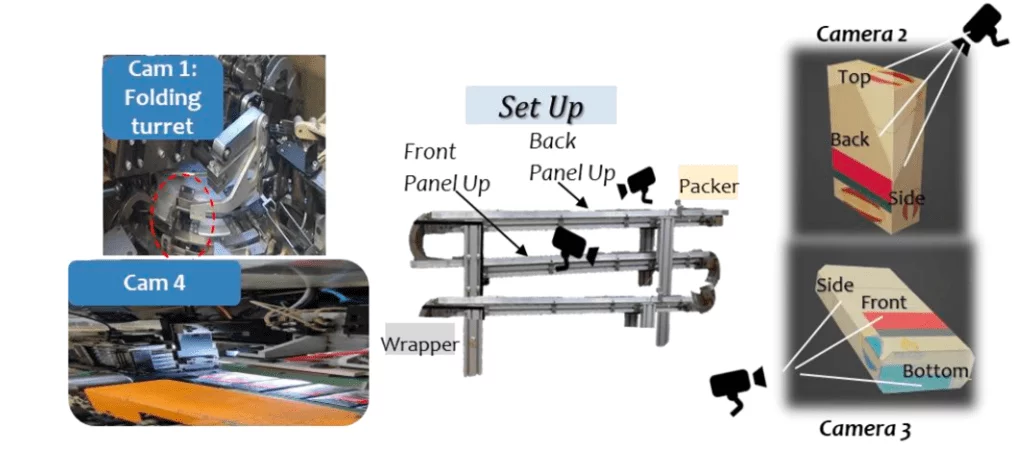Introduction
The way a product is packaged plays a crucial role in its overall success. Packaging not only serves as a protective barrier but also serves as a branding tool. However, packaging that fails to meet quality standards can lead to customer dissatisfaction, product recalls, and even legal issues. This underscores the importance of robust packaging inspection procedures.
The Significance of Packaging Inspection
Packaging inspection is more than just ensuring that products look presentable. It involves a comprehensive assessment of various aspects, such as product integrity, safety, and functionality. A thorough inspection process helps identify defects, inconsistencies, and potential hazards.
Key Components of Packaging Inspection
Visual Assessment
Visual inspection involves scrutinizing the packaging for any visible defects or irregularities. This includes checking for damaged labels, misprints, dents, or scratches.
Functional Testing
Functional testing ensures that the packaging serves its intended purpose. For example, in the case of food packaging, it’s essential to verify that seals are intact to prevent contamination.
Safety Checks
Packaging should meet safety standards to avoid any harm to consumers. This involves verifying that packaging materials are non-toxic and that they don’t interact negatively with the product.
Establishing Effective Packaging Inspection Procedures
To improve packaging inspection procedures, it’s essential to:
Defining Inspection Criteria
Clear and detailed criteria should be established to define what is acceptable and what isn’t. This eliminates ambiguity and ensures consistency.
Selecting Appropriate Testing Methods
Different products require different testing methods. Understanding the best-suited methods for a particular product is crucial for accurate results.
Training Inspection Personnel
Well-trained personnel are the backbone of effective packaging inspection. Training should encompass product knowledge, testing techniques, and quality standards.
Utilizing Technology for Enhanced Inspection
Automated Vision Systems
Automated vision systems use cameras and software to detect defects with precision. They can quickly identify issues that might be missed by the human eye.
Addressing Common Challenges in Packaging Inspection
Ensuring Consistency
Maintaining consistency in packaging inspection can be challenging, especially in high-volume production. Standardizing procedures and regular audits can help.
Dealing with High Production Volumes
In industries with high production rates, inspection procedures must be efficient without compromising accuracy. Automation and parallel testing can alleviate this challenge.
Benefits of Stringent Packaging Inspection
Customer Satisfaction
High-quality packaging enhances the customer’s perception of the product and the brand, leading to increased satisfaction and loyalty.
Risk Mitigation
Thorough inspection minimizes the risk of defective products reaching consumers, reducing the likelihood of costly recalls.
Future Trends in Packaging Inspection
AI and Machine Learning
These technologies can analyze vast amounts of data quickly, leading to more accurate defect detection and predictive maintenance.
Sustainable Packaging
As sustainability gains importance, inspection procedures will need to ensure that eco-friendly packaging materials meet quality standards.
Conclusion
Packaging inspection procedures are a cornerstone of product quality control. By investing in well-defined processes, proper training, and innovative technologies, businesses can enhance their packaging’s integrity, safety, and functionality. Ultimately, this leads to greater customer satisfaction, minimized risks, and a stronger brand reputation. For further inquiries or a demo, you can Contact Trident Information Systems.
FAQs
- What is packaging inspection? Packaging inspection involves assessing the quality, safety, and functionality of product packaging to ensure it meets established standards.
- Why is packaging inspection important? Packaging inspection is vital to prevent defects, ensure product safety, and maintain customer satisfaction.
- How does packaging inspection benefit businesses? Stringent packaging inspection improves customer satisfaction, reduces risks, and helps maintain brand reputation.
- What does the future hold for packaging inspection? The future of packaging inspection lies in AI, machine learning, and sustainable packaging materials, promoting advanced quality control and environmental responsibility.



